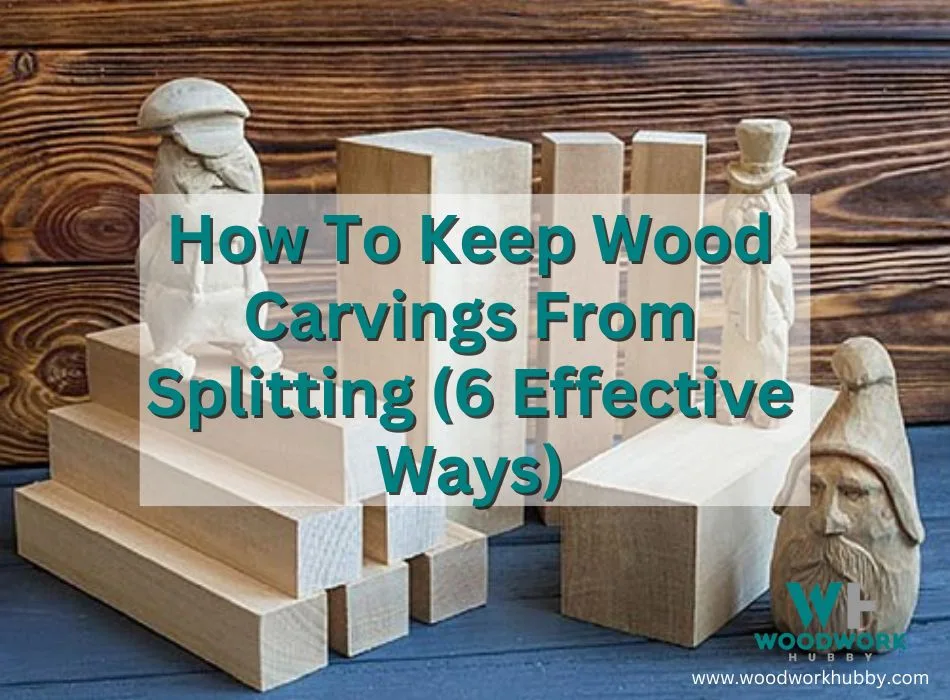Are you frustrated with your beloved wood carvings splitting and cracking over time? Splitting is a common issue caused by the uneven drying of wood, creating unwanted stress within the material.
Here are the 6 proven methods to keep your wood carvings from splitting:
- Properly sealing
- Regular painting
- Apply Oil finish
- Use Heartwood over Sapwood
- Use dried wood
- Store carvings in the shade
Understanding Wood Carving and Splitting Issues
Carving wood is a beautiful and intricate craft, but it comes with its own set of challenges. One major issue is the potential for the wood to split or crack, which can ruin hours of meticulous work.
This splitting often occurs because of differential drying speeds between the outer layer and inner core of large wood carvings.
Wood’s porous nature lets moisture move in and out easily. The outside dries quicker than the inside, leading to distortion and possible fractures as tensions develop within different parts.
Furthermore, if carving happens before proper drying takes place, internal tension might cause cracks during or after shaping it.
The application of sealants such as oil finishes or paint provides a barrier against this moisture exchange by eliminating porosity. It keeps equilibrium in moisture content thereby reducing stress concentration on any section of carved items while offering protection from green splitting—where wet wood splits due to rapid drying.
In summary, understanding these issues plays an important role in preserving your wooden masterpieces against cracking problems down the line.
6 Effective Ways to Prevent Wood Carvings From Splitting
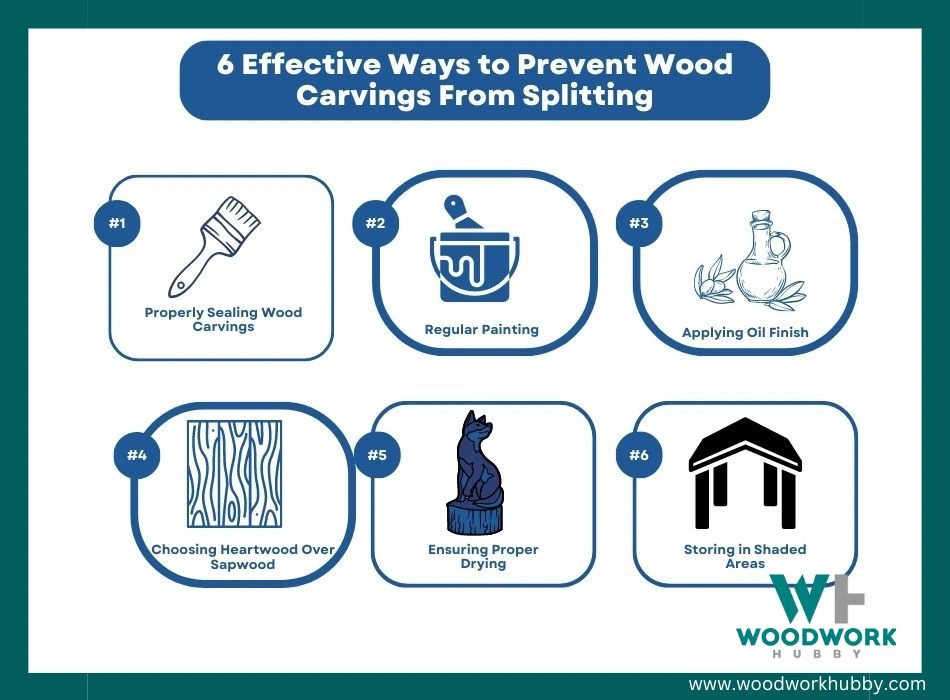
To prevent wood carvings from splitting, you can properly seal them, regularly paint them, apply an oil finish, choose heartwood over sapwood, ensure proper drying, and store them in shaded areas.
1. Properly Sealing Wood Carvings
Taking appropriate measures to seal wood carvings is a crucial step in ensuring their longevity and resistance to damage. A solid sealing routine not only wards off the detrimental effects of moisture but also reduces the stress concentration within the wood.
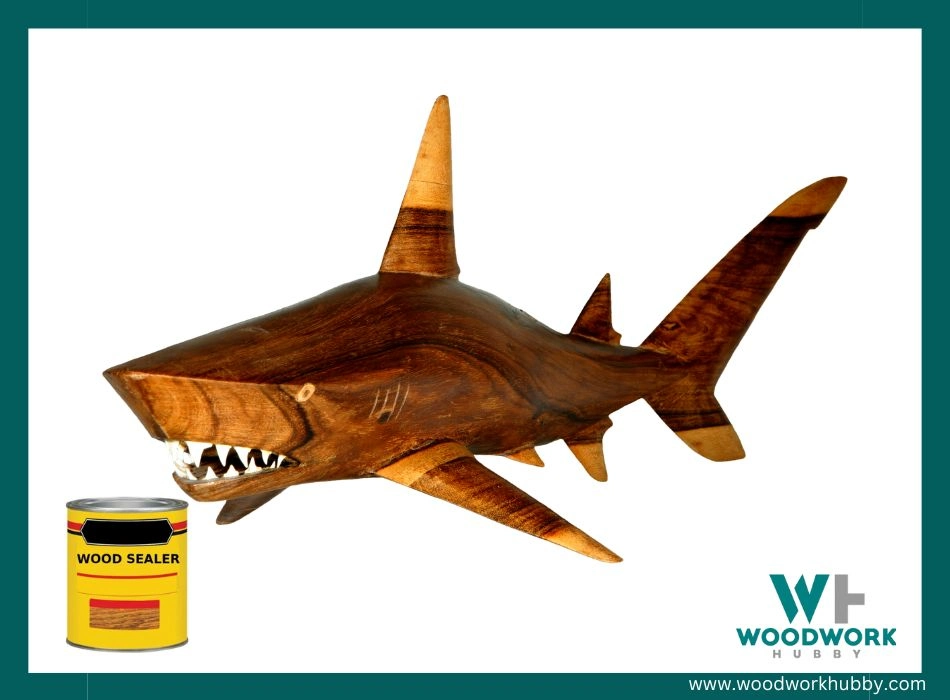
Implementing at least two layers of sealant, such as oil finish or paint, can substantially enhance protection.
Providing this shield involves several tasks that every wood carving enthusiast should take into consideration. Firstly, before starting any sealing process, make sure you have a clean surface free from dust or debris.
Afterward, apply your chosen sealant following proper instructions for maximum benefits – remember it’s about adding value through protection, not merely altering appearance.
It’s prudent to give time for each layer of sealant to dry completely before applying another one; rushing this part may compromise your work and fail on its protective function.
Regular maintenance incorporating an annual application of polyurethane helps retain beauty and durability despite fluctuations in temperature and humidity conditions over time. Sealing with high-quality products will ensure that beautiful pieces remain admirable parts of your living space without cracking up under environmental pressures.
2. Regular Painting
Regular painting acts as a sealant on wood carvings, aiding in the prevention of splitting due to moisture diffusion. The process involves adding at least two layers of sealing paint for maximum protection.
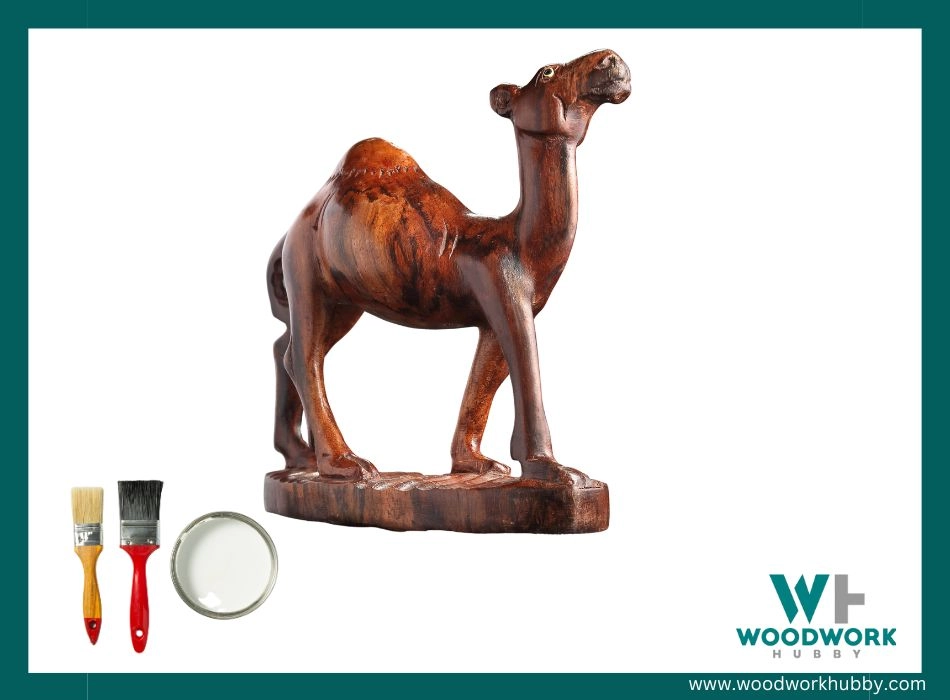
Over time, the lifeline of paint diminishes and hence repainting becomes necessary to maintain the glossy surface and durability of your cherished wood carving pieces. This is a crucial aspect in preserving chainsaw carving, Pacific Northwest-style carvings, or any wood art.
So, ensuring regular painting will not only sustain its smooth surface but also prolong the lifespan of your captivating wooden artifacts.
3. Applying Oil Finish
Applying an oil finish to wood carvings is an effective way to prevent splitting. The oil not only enhances the appearance of the carving but also helps seal and protect the wood from moisture.
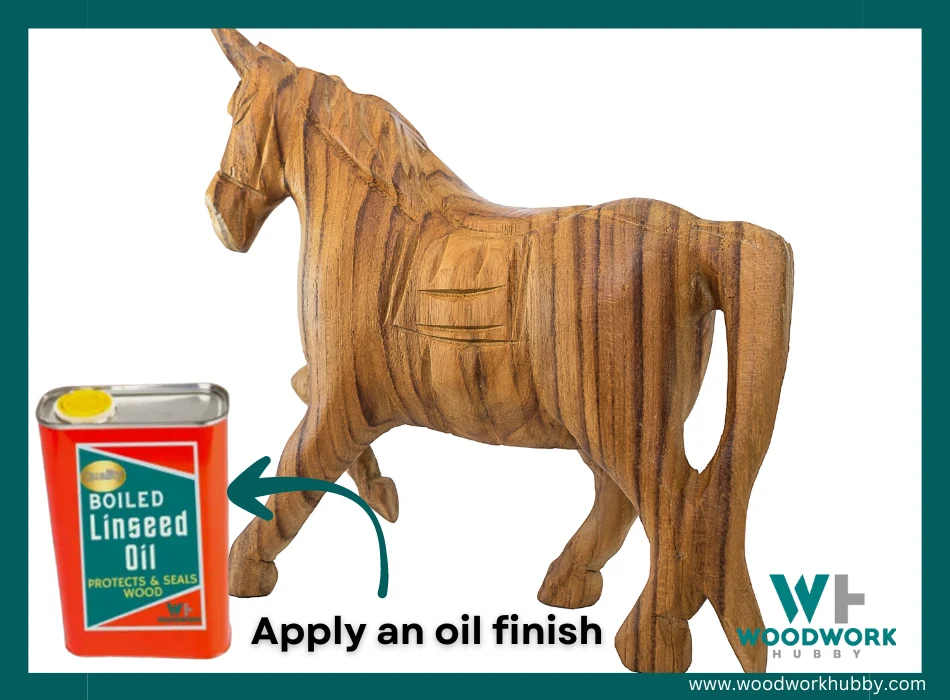
Boiled linseed oil, in particular, is commonly used as it controls the drying process and provides added protection against splitting. By applying a layer of oil finish regularly, you can ensure that your wood carvings remain strong and resistant to cracking over time.
4. Choosing Heartwood Over Sapwood
Choosing heartwood over sapwood is a crucial factor to consider when carving wood. Heartwood, which is the older and darker part of the tree, is more durable and resistant to splitting compared to sapwood, which is lighter in color and located closer to the bark.
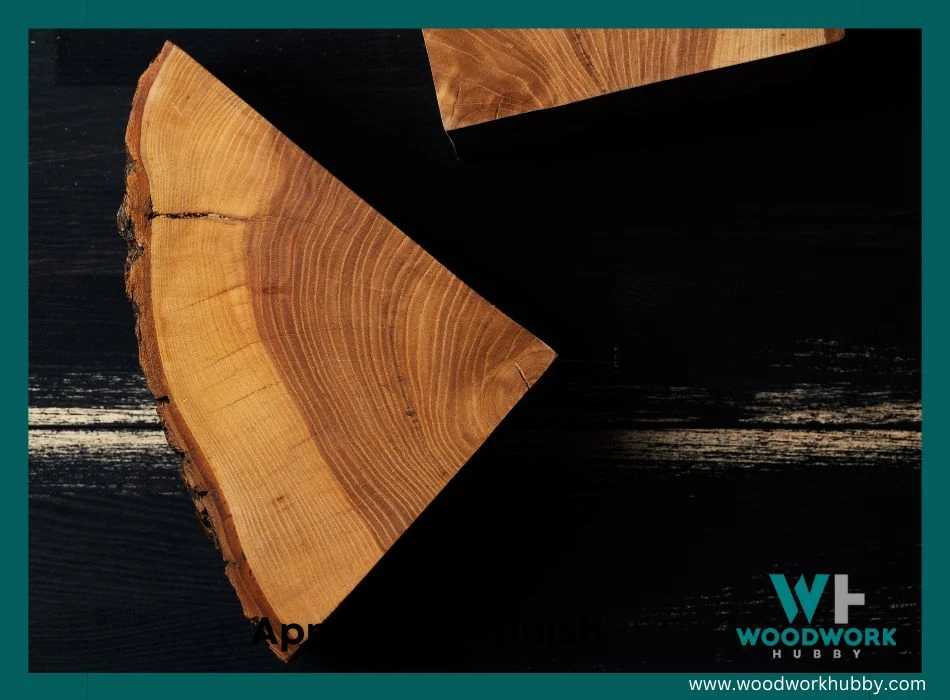
By selecting heartwood for your wood carvings, you can enhance their longevity and reduce the risk of splitting. This choice ensures that your carved pieces will be able to withstand the test of time and retain their beauty for years to come.
5. Ensuring Proper Drying
Proper drying is crucial to prevent wood carvings from splitting. It involves allowing the wood to dry slowly and evenly, minimizing stress and tension that can lead to cracks. To ensure proper drying, it is recommended to air-dry the wood for several months before starting the carving process.
This allows moisture within the wood to escape gradually, reducing the risk of splitting. Additionally, sealing the ends of the wood with wax or paint can slow down the drying process and minimize splitting.
Storing the wood in a controlled environment with consistent temperature and humidity levels also helps prevent excessive drying, which can cause cracks in the carvings. By following these steps, you can help preserve your wood carvings for years to come.
6. Storing in Shaded Areas
Storing wood carvings in shaded areas is a simple yet effective way to prevent splitting. By keeping the carvings away from direct sunlight, you can reduce the risk of drying out and cracking caused by exposure to UV rays.
Shaded storage also helps maintain consistent humidity levels, which is crucial for preventing splitting. Additionally, good ventilation in shaded areas prevents moisture build-up that can lead to further damage.
So, when it comes to storing your wood carvings, choosing a shaded spot is a smart move for their preservation.
Common Mistakes to Avoid to Prevent Splitting
Wood carving enthusiasts often make mistakes that can lead to splitting. To ensure your wood carvings stay intact, avoid these common pitfalls:
- Using the wrong type of wood for carving.
- Cutting against the grain or in the wrong direction.
- Failing to properly dry the wood before carving or preserving it.
- Neglecting to seal the carved wood with an oil finish or paint.
Tips for Preserving Wood Carvings
Protect wood carvings from green splitting by ensuring they dry properly before sealing, fix cracks using appropriate methods, and use effective sealing techniques to prevent moisture damage.
Protecting Carvings from Green Splitting
Wood carvings are susceptible to a type of splitting known as “green splitting.” This occurs when the wood has not properly dried or cured before it is carved, leading to internal stress and subsequent cracking.
To protect carvings from green splitting, it is crucial to ensure proper drying. Allowing the wood to acclimate in a shaded area with good air circulation can help equalize moisture content and reduce tension differences within the piece.
Additionally, sealing the wood with an appropriate moisture sealant can provide an extra layer of protection against green splitting by preventing rapid moisture absorption or release.
Fixing Wood Carvings Cracks
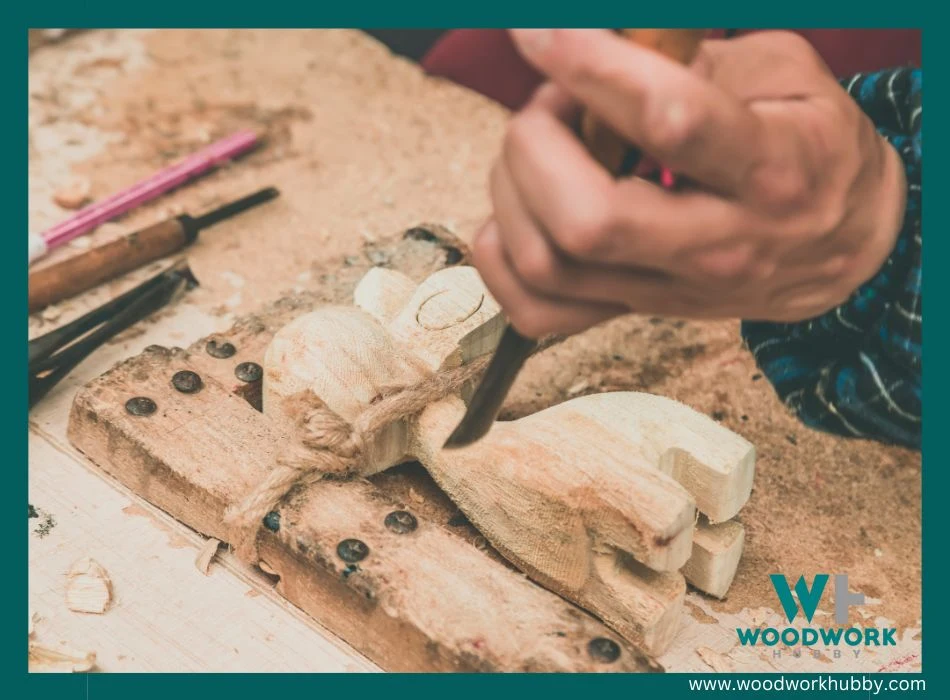
To fix cracks in wood carvings, start by assessing the severity of the damage. For small cracks, you can use wood glue to fill and repair them. Apply the glue to both sides of the crack and gently press them together until they are fully closed.
Wipe off any excess glue with a damp cloth and let it dry completely before sanding and refinishing the area. For larger or more significant cracks, you may need to use epoxy resin or wood filler to fill in the gaps.
Follow the manufacturer’s instructions for mixing and applying these products, making sure to smooth out any uneven surfaces. Once your repairs are complete, finish off by sanding, staining, or painting as needed to blend everything together seamlessly.
Sealing Methods for Wood Carvings
Sealing wood carvings is a crucial step in preventing splitting. Applying an oil finish or paint can help seal the pores of the wood and reduce porosity, preventing moisture from entering or exiting the wood.
This reduces the stress concentration and lowers the risk of cracking. It is recommended to apply multiple coats of sealer and regularly reapply it for better efficiency and protection.
By sealing wood carvings with at least two coats, you can ensure that they are well-protected and have a longer lifespan. Additionally, oil finishing the wood carving provides an extra layer of protection by sealing the pores and further guarding against moisture damage.
FAQs about Wood Carving Maintenance
Can oil prevent wood carving’s splitting?
Oil finishes are a great way to preserve wood carvings. The oil will soak into the grain and prevent it from drying out too much. I have found that Linseed oil works well.
How to Preserve Wood Carvings?
To preserve wood carvings, it is important to properly seal them. Applying an oil finish or multiple coats of paint can help prevent splitting by eliminating porosity and reducing moisture absorption.
Regular reapplication of the sealer in the first year, followed by annual maintenance, will ensure long-lasting protection for the wood carvings. Additionally, choosing heartwood over sapwood when carving can also contribute to preventing splitting.
It is crucial to keep wood carvings away from direct sunlight and maintain a suitable atmosphere with proper humidity levels to further protect them from cracking and distortion.
Can Oil Prevent Wood Carving’s Splitting?
Applying oil to wood carvings can help prevent splitting. Oil acts as a sealant, reducing porosity and preventing moisture from entering or exiting the wood. This helps to minimize tension differences and stress concentration within the carving, which are common causes of splitting.
Regularly coating the wood with oil as part of maintenance can provide an extra layer of protection and increase the lifespan of your wood carvings. Boiled linseed oil is a popular choice for this purpose, along with using wood stabilizers if needed.
Conclusion – How To Keep Wood Carvings From Splitting
In conclusion, preventing wood carvings from splitting requires proper sealing and regular maintenance. Applying oil finishes or paint can help protect the porous material and reduce tension differences.
Choosing the right type of wood and ensuring proper drying are also important factors. By following these effective ways, you can preserve the beauty and durability of your wood carvings for years to come.
FAQs
1. What are some effective ways to prevent wood carvings from splitting?
Effective ways to prevent wood carvings from splitting include using proper drying techniques, sealing the wood with a protective finish, avoiding high humidity environments, applying moisture barriers like sealants or wax, carving with the grain of the wood, and storing carvings in a controlled environment.
2. How long does it take for wood carvings to properly dry?
The drying time for wood carvings can vary depending on several factors such as the type and thickness of the wood, environmental conditions, and carving intricacy. Generally, it can take anywhere from a few days to several weeks for carved pieces to fully dry.
3. Is there a specific type of finish that works best for preventing splits in wood carvings?
There isn’t one specific type of finish that is universally best for preventing splits in wood carvings. However, finishes like polyurethane or varnish are commonly used as they provide a protective barrier against moisture and help maintain the stability of the carved piece.
4. Can I fix splits in already carved wooden pieces?
In some cases, small splits or cracks in already carved wooden pieces can be repaired using techniques like filling with epoxy resin or glue followed by sanding and refinishing. However, larger or more severe splits may require professional restoration or even replacement of the damaged section.

